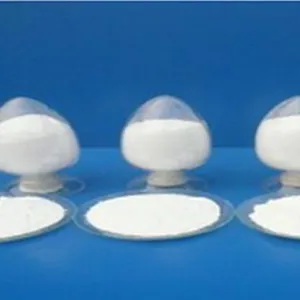
Understanding the Properties and Uses of Phosphoric Acid in Various Industries
The Versatility and Applications of Phosphoric Acid
Phosphoric acid, a colorless and odorless inorganic acid, is a vital compound with the chemical formula H₃PO₄. It is a key player in various industrial processes and has broad applications across multiple sectors. This article explores the properties, uses, and significance of phosphoric acid in contemporary industry.
Properties of Phosphoric Acid
Phosphoric acid is a weak acid, meaning it does not dissociate completely in water. Its acidic properties stem from the presence of three hydrogen atoms capable of ionizing to release protons (H⁺), making it a triprotic acid. With a molar mass of 98.00 g/mol, phosphoric acid is typically encountered in its liquid form at room temperature, exhibiting a high solubility in water. Its pH is typically around 2.1 when in concentrated form.
Industrial Uses
Phosphoric acid is extensively utilized in the manufacture of fertilizers, which are essential for global agriculture. Approximately 90% of the phosphoric acid produced annually is employed in the creation of phosphate fertilizers. These fertilizers are crucial for enhancing crop yields and ensuring food security, especially in a world with a growing population.
In addition to agriculture, phosphoric acid is used in food and beverage production. It acts as an acidity regulator and flavoring agent, commonly found in soft drinks. It imparts a tangy taste and helps preserve the product by lowering the pH, thus inhibiting microbial growth.
phosphoric acid acid

Phosphoric acid also plays a significant role in the pharmaceutical industry. It is utilized in the production of various medicinal compounds and acts as a pH stabilizer in some formulations. Additionally, it serves as an important ingredient in dental products, including etching gels, which help prepare the enamel surface before the application of dental materials.
Environmental and Safety Considerations
While phosphoric acid is vital in countless applications, it must be handled with care. As a corrosive substance, it can cause severe burns and damage to tissues upon contact. Appropriate safety measures, including protective clothing and eyewear, are essential when handling phosphoric acid in industrial settings.
Environmental concerns associated with phosphoric acid include its role in eutrophication. When phosphates from fertilizers enter water bodies through runoff, they can lead to excessive growth of algae, depleting oxygen levels and harming aquatic life. Therefore, responsible management of phosphoric acid use in agriculture is necessary to mitigate these environmental impacts.
Conclusion
Phosphoric acid is an indispensable compound that underpins various industries, from agriculture to food production, pharmaceuticals, and beyond. Its ability to enhance crop yields, preserve food, and serve vital functions in healthcare exemplifies its versatility and importance. However, it is critical to balance its benefits against potential environmental impacts and safety risks. As industries continue to evolve, the demand for phosphoric acid is likely to persist, reinforcing its status as a cornerstone of modern chemical applications. By adhering to safety protocols and promoting sustainable practices, we can harness the benefits of this valuable compound while minimizing its adverse effects on health and the environment.
-
Understanding Synthetic Rubber OptionsNewsApr.27,2025
-
Trichloroisocyanuric Acid: Essential for Clean and Safe WaterNewsApr.27,2025
-
Sodium Dichloroisocyanurate: Key to Safe Water TreatmentNewsApr.27,2025
-
Sodium Acid Pyrophosphate: Essential in Modern Food ProcessingNewsApr.27,2025
-
Essential Water Treatment ChemicalsNewsApr.27,2025
-
Denatured Alcohol and Its Industrial UsesNewsApr.27,2025
-
The Versatile Uses of Sodium BicarbonateNewsApr.24,2025
Hebei Tenger Chemical Technology Co., Ltd. focuses on the chemical industry and is committed to the export service of chemical raw materials.
-

view more DiethanolisopropanolamineIn the ever-growing field of chemical solutions, diethanolisopropanolamine (DEIPA) stands out as a versatile and important compound. Due to its unique chemical structure and properties, DEIPA is of interest to various industries including construction, personal care, and agriculture. -

view more TriisopropanolamineTriisopropanolamine (TIPA) alkanol amine substance, is a kind of alcohol amine compound with amino and alcohol hydroxyl, and because of its molecules contains both amino and hydroxyl. -

view more Tetramethyl Thiuram DisulfideTetramethyl thiuram disulfide, also known as TMTD, is a white to light-yellow powder with a distinct sulfur-like odor. It is soluble in organic solvents such as benzene, acetone, and ethyl acetate, making it highly versatile for use in different formulations. TMTD is known for its excellent vulcanization acceleration properties, which makes it a key ingredient in the production of rubber products. Additionally, it acts as an effective fungicide and bactericide, making it valuable in agricultural applications. Its high purity and stability ensure consistent performance, making it a preferred choice for manufacturers across various industries.











